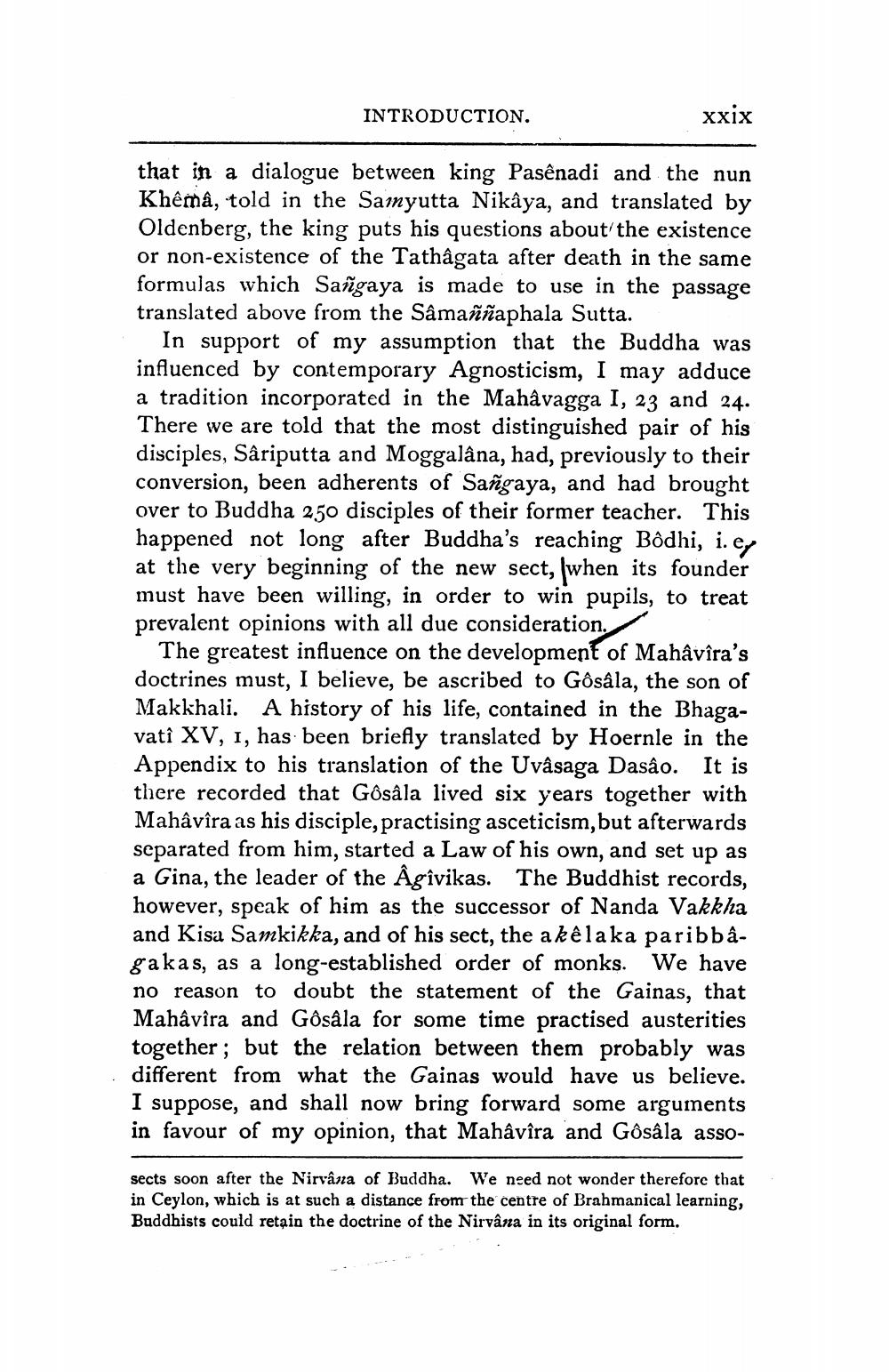________________
xxix
that in a dialogue between king Pasênadi and the nun Khêmâ, told in the Samyutta Nikâya, and translated by Oldenberg, the king puts his questions about the existence or non-existence of the Tathâgata after death in the same formulas which Sangaya is made to use in the passage translated above from the Sâmaññaphala Sutta.
INTRODUCTION.
In support of my assumption that the Buddha was influenced by contemporary Agnosticism, I may adduce a tradition incorporated in the Mahâvagga I, 23 and 24. There we are told that the most distinguished pair of his disciples, Sâriputta and Moggalâna, had, previously to their conversion, been adherents of Sangaya, and had brought over to Buddha 250 disciples of their former teacher. This happened not long after Buddha's reaching Bôdhi, i. e at the very beginning of the new sect, when its founder must have been willing, in order to win pupils, to treat prevalent opinions with all due consideration.
The greatest influence on the development of Mahâvîra's doctrines must, I believe, be ascribed to Gôsâla, the son of Makkhali. A history of his life, contained in the Bhagavatî XV, 1, has been briefly translated by Hoernle in the Appendix to his translation of the Uvâsaga Dasâo. It is there recorded that Gôsâla lived six years together with Mahâvîra as his disciple, practising asceticism, but afterwards separated from him, started a Law of his own, and set up as a Gina, the leader of the Âgîvikas. The Buddhist records, however, speak of him as the successor of Nanda Vakkha and Kisa Samkikka, and of his sect, the akêlaka paribbâgakas, as a long-established order of monks. We have no reason to doubt the statement of the Gainas, that Mahâvîra and Gôsâla for some time practised austerities together; but the relation between them probably was different from what the Gainas would have us believe. I suppose, and shall now bring forward some arguments in favour of my opinion, that Mahâvîra and Gôsâla asso
sects soon after the Nirvâna of Buddha. We need not wonder therefore that in Ceylon, which is at such a distance from the centre of Brahmanical learning, Buddhists could retain the doctrine of the Nirvâna in its original form.




